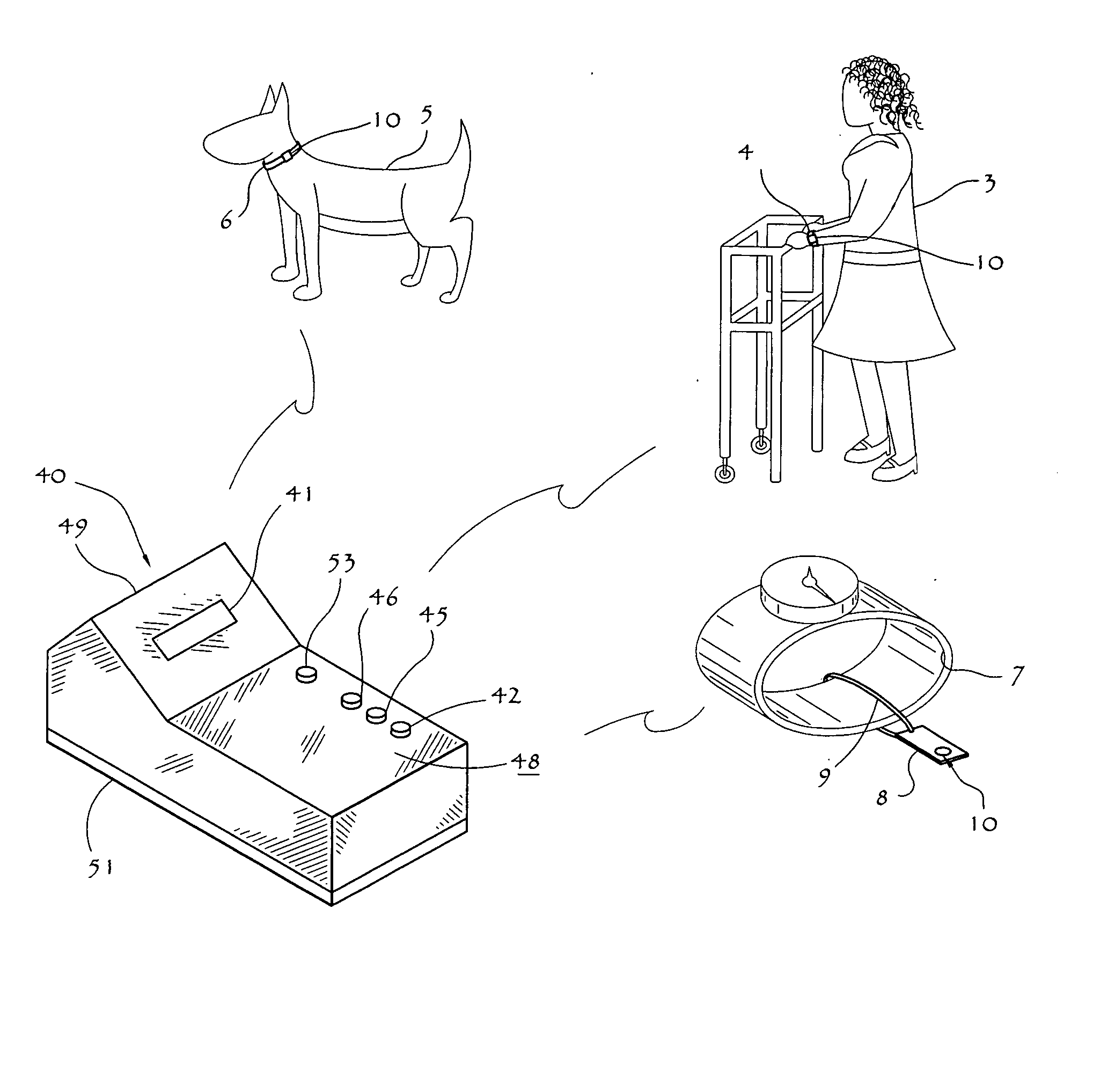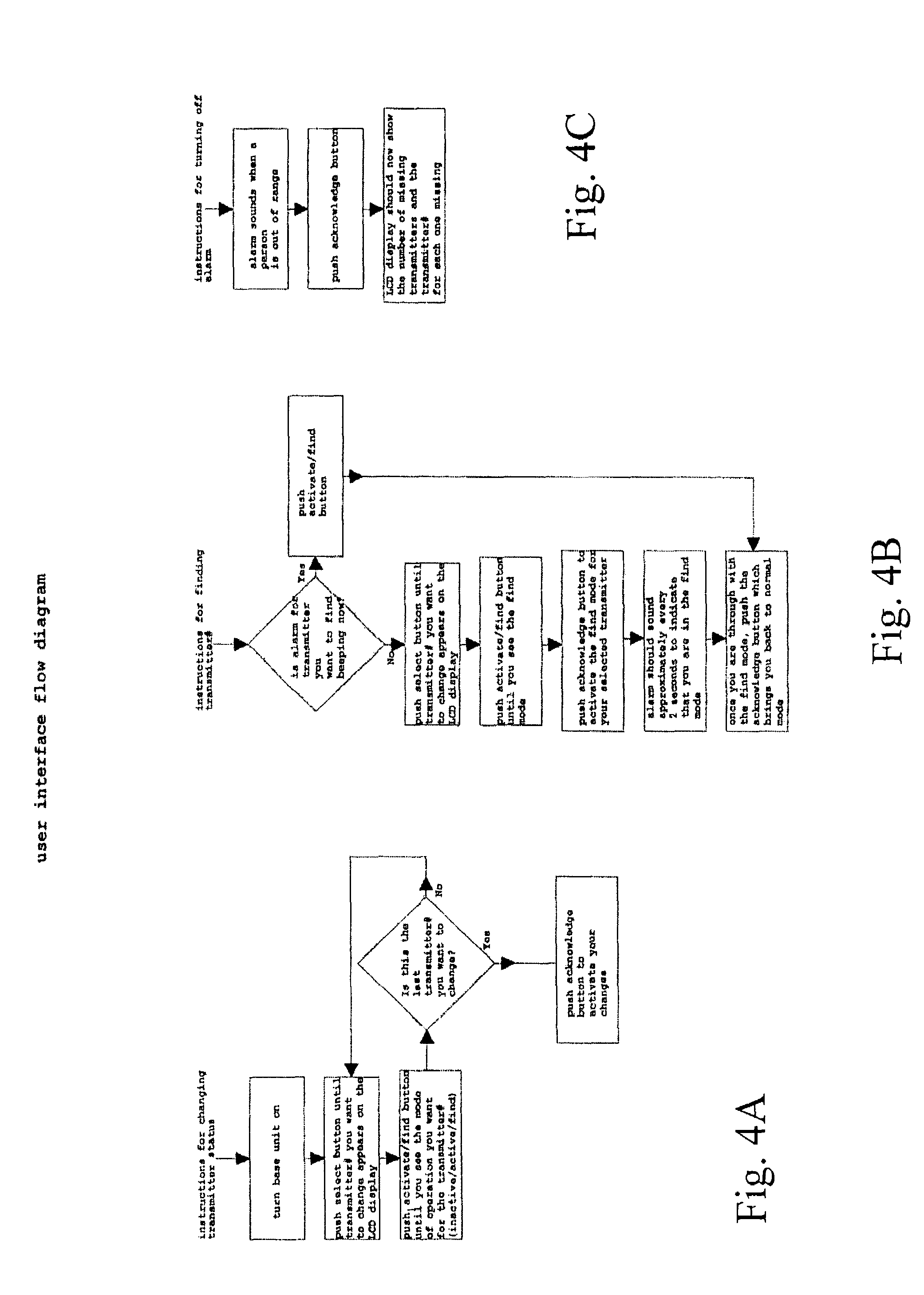Wireless item location monitoring system and method
a monitoring system and wireless technology, applied in the field of wireless monitoring systems, can solve the problems of preventing thorough investigation based on suspicion alone, pets straying too far from home locations sometimes getting lost or stolen, and endangering themselves and becoming los
- Summary
- Abstract
- Description
- Claims
- Application Information
AI Technical Summary
Benefits of technology
Problems solved by technology
Method used
Image
Examples
Embodiment Construction
[0023]With reference now to the figures, and in particular to FIGS. 1-2, a general scheme of the present invention depicts multiple targets 1 being tracked by a single monitoring base unit 40 according to the present invention. The present invention has a wide variety of applications, some of which are depicted in FIG. 1, such as keeping track of ambulatory patients 3 at a nursing home or hospital, tracing livestock or pets 5 within a neighborhood (not shown), or tagging expensive merchandise 7 to assure it does not leave a retail premises without being purchased. One having ordinary skill in the art will recognize that other targets 1 may be monitored, with appropriate variations as described below, without departing from the spirit and scope of the present invention.
[0024]Transmitter 10 typically employs attachment means 11 appropriate to target 1. For example, as depicted in FIG. 2, transmitter 10 includes an elastic strap 11 forming a loop adapted to surround the arm for comfort...
PUM
 Login to View More
Login to View More Abstract
Description
Claims
Application Information
 Login to View More
Login to View More - R&D
- Intellectual Property
- Life Sciences
- Materials
- Tech Scout
- Unparalleled Data Quality
- Higher Quality Content
- 60% Fewer Hallucinations
Browse by: Latest US Patents, China's latest patents, Technical Efficacy Thesaurus, Application Domain, Technology Topic, Popular Technical Reports.
© 2025 PatSnap. All rights reserved.Legal|Privacy policy|Modern Slavery Act Transparency Statement|Sitemap|About US| Contact US: help@patsnap.com



